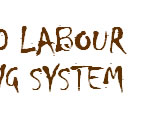|
|
|
Background
|
Introduced in Côte d'Ivoire since 1888 in Aboisso by Verdier and Bretignierds, the culture of the cocoa tree has taken a significant place in the Ivorian economy. Cocoa represents nearly 10% of the country's GDP and 40% of its export revenues, i.e. 789 billions CFA Francs in 1998. The cocoa production increased from 725,393 tons in 1990 to 1.4 million tons in 2002.
|
|
|
At the beginning, the largest zones of production were located in the eastern and center part of the country. These regions were part of the “ Cocoa belt”. Given the climatic changes and the degradation of soils, a new front of cocoa culture has developed in the western part of the country, along with the migration flows of populations within the country (center, center-eastern, and north) and from outside. Therefore, the main cacao zone is currently the center-western part of the country, with 36% of the total national production. This production zone and the one from the south-western part of the country have seen their production grow whereas the southern and center-eastern part of the country's have decreased.
|
The cocoa culture in Côte d'Ivoire did not required heavy investments in agricultural supplies and tools. It is generally not heavily mechanized and operates with small tools such as machete and daba. Other tools required include modern tools such as atomizers and sprayers for phyto-sanitary treatments.
|
|
|







